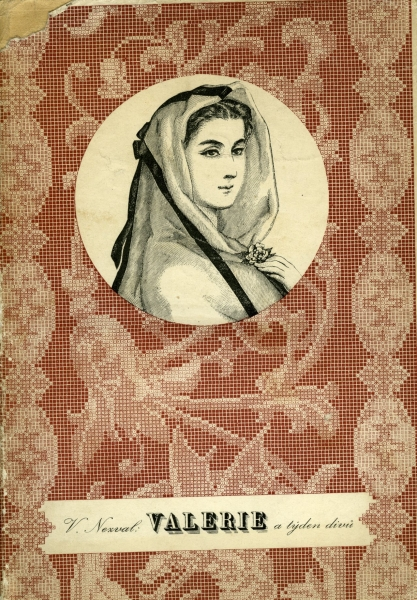
(Above photo: Kamil Lhotak's design for the first edition)
Publisher (English Translation) : Twisted Spoon Press
Content warnings: Implied sexual assault
Well, um… this will be interesting to be sure. My fellow Carrollians you must appreciate that this is a very, very difficult book to review. Its very difficult to describe and at least half of the novel comes down to personal interpretation. But I’ll give you my best shot at a plot overview.
Valerie, a 17 year old innocent girl, lives with her decrepit grandmother in the midst of the Czech Republic in the medieval era. When she is finally old enough to be considered a woman, her earrings are stolen by a young man named Eagle and then returned to her. After seeing a vision of a horrifying vampire-like man known as the Polecat, she retires home to bed. Only for her week to become increasingly bizarre as she is approached by various vampiric villagers. The only thing that can save her from these strange encounters are herself and her magical earrings. Whether Valerie’s week even happens is debatable. It could all just be a utterly surreal dream…
First things first, if you hate confusing, surreal or convoluted plots, I would advise you not to read this. After the set up is established it becomes truly nonsensical. However, if you don’t mind, be prepared for a searingly strange yet intriguing story which shifts its tone back and forth through several genres. Is it surreal horror? A adult’s fairy tale? A Alice-like tale of a girl encountering bizarre things? Its technically all of these at once.
Valerie as a protagonist brings to mind Carroll’s Alice several times. Valerie is determined to get to the bottom of all of the strangeness that envelopes her- even if it could all be imagined. Unlike her counterpart in the 1970 film, book Valerie is often frightened by the things she encounters- but never to the point of despair. She never gives up entirely.
And then there are the lovely illustrations by Kamil Lhotak, inspired by Victorian collages. They are stunning.
There have since been illustrations for Japanese and German editions (the Japanese illustrations being less abstract) which are also just as interesting as Lhotak's originals.
If you’re feeling brave enough, its well worth the read.